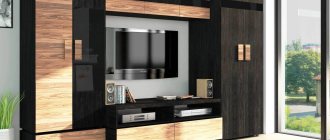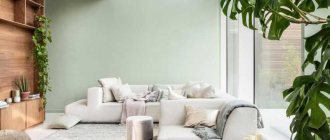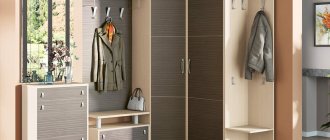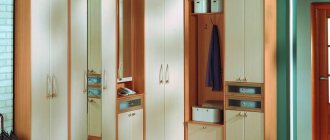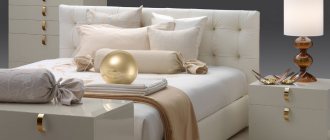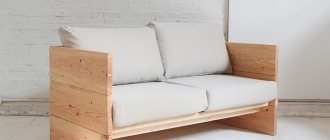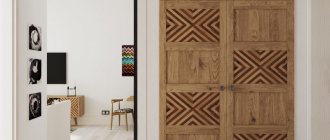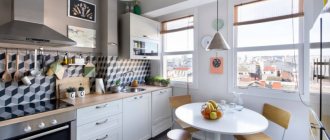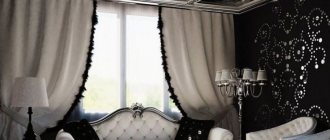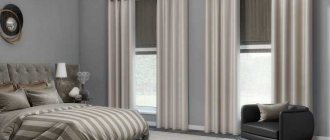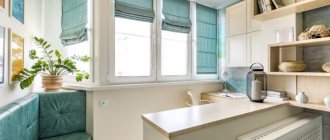Photo: repairstyling.com Among all finishing materials, decorative plaster occupies a special place. Since its appearance, it has not lost ground for a season, but on the contrary, more and more interesting options are appearing. In the same way, bark beetle plaster appeared at one time, which has now deservedly become a classic in interior design and facade decoration. Let's tell you more!
Characteristics of the "Bark Beetle"
The material does not require high qualifications when working with it, is in no way inferior to other finishing materials during operation and gives the house an exquisite appearance. In addition, its texture allows you to hide defects in wall coverings.
The base of the plaster is gypsum or acrylic. Packaged in the form of a ready-to-use mixture or powder. Marble chips with a grain size of 0.08-0.35 cm are added to the mixture. This component gives the coating a grooved relief.
Most often, this plaster is used to cover the façade of a house. The color of the material is light shades, so after plastering the facade is painted, choosing a color to taste.
How to properly coat the surface?
The whole process is divided into two stages. Let's look at the nuances:
Work is carried out from the bottom corner on the right side, gradually moving to the top, carefully leveling the material over the surface. It is necessary to ensure the formation of a layer the size of a liquid granule. To do this, focus on the grooves or scratches that appear.
You can use a spatula and grater at 60 degrees relative to the surface. After completion, you need to wait until the material dries to begin forming the desired texture.
The selected texture option is easily created with a grater or plastic trowel. Any of the tools is pressed against the material and pressed slightly into it. The required pattern will be formed using the master’s dexterity of movements using the prepared material:
Using intermittent circular movements with a grater, you can form the classic shapes created by a beetle on a wood base. To do this, you need to press the tool a little and use circular or arcuate movements in all directions to create a pattern.
The pattern called “travertine” is created based on short and slightly jerky movements. They must be performed using a trowel, moving it in all directions in order to create an imitation of the presence of a stone.
To create a pattern called “cork” you will need a polystyrene foam trowel. To do this, intensive circular movements are performed in one direction. It is recommended to maintain a small radius of movement of the tool.
An imitation of fabric texture is created using cross-shaped movements of a grater. The tool moves from bottom to top based on average speed. Horizontal lines are applied with one quick stroke.
You can form a pattern called “rain” using continuous diagonal movements from top to bottom, starting from the top right side to the bottom left side.
Important: When the work is finished and a full-fledged pattern has formed, it is necessary to erase the unsightly places at the joints and slightly level the entire surface without significant pressure on the pattern.
In general, imitating a surface similar to the natural version created by a beetle on a tree is not particularly difficult. Domestic craftsmen most often use Ceresit bark beetle plaster, since it is offered on the basis of many types, and it is always easy to select the necessary finishing material. You can work with it on walls, facades or ceilings.
If it is difficult for you to choose the necessary material for one of your design ideas, you can use a catalog of bark beetle plaster in the interior from a popular brand or a reputable store. Thus, you can quickly find what you want to see on the surface outside or inside the building. We hope that you will have excellent results after using this finishing material. And you will often resort to his help.
Material advantages
- Mechanical strength and no harm to the environment. The starting components of plaster are only natural materials.
- Light weight. Reduces the load on the supporting structures of the house due to light mineral fillers.
- The ability not to lose strength, moisture-proof and color characteristics over a long period of operation.
- Fire resistance, ability to withstand open fire.
- Variety of colors. Choosing the right bark beetle color for the facade will not require significant labor costs. Ability to resist mold fungi.
- Attractive prices and a wide range of pricing solutions.
Painting plaster
The finished liquid mixture can be tinted before application, but most experts agree that it is better to paint the walls after finishing the plastering work. You can start painting a day after applying the bark beetle.
Tip: to get grooves of a darker shade, you can paint the wall a dark color, and after the layer has dried, apply a lighter shade of paint with a semi-dry roller.
Additional protection can be provided by applying varnish. Glossy varnish will create a glowing effect, matte will retain the impression of wood eaten by bark beetle.
USEFUL INFORMATION: Which foam is best for plastic windows
Disadvantages of the material
- If the coating is damaged, it is very difficult to repair it. To do this, it is necessary to remove the damaged layer of plaster and reapply it.
- Application technology requires professionalism. In this case, a special trowel is used.
- It is quite difficult to remove contaminants from a surface plastered with “Bark Beetle” and having a complex topography.
Founds
The main function of the Osnovit finish is to create not just a decorative, but also a protective layer. Most often used in systems with rigid insulation fastening. This finish is recommended for use in cultural and leisure centers, lobbies, hallways, administrative premises and common areas. The base can be cement and cement-lime plasters and putties, foam and aerated concrete.
Exterwell OS-1.0 WK, Osnovit, white (color-matched)
Price:
- 25 kg – 488 rub.
Characteristics:
- vapor permeability – 0.1 mg/mchPa;
- adhesion strength – 0.65 MPa;
- consumption – 1.6-1.8 kg/m2;
- grain size – 1.0 mm;
- frost resistance – 50 cycles;
- operating temperature – from -50 to +65;
- shelf life – 12 months.
Pros:
- variety of design;
- ease of application;
- Possibility of painting in any color.
Minuses:
- No.
Exterwell OM-2.5 WK, Osnovit, super white
Cost:
- 25 kg – 889 rub.
Characteristics:
- vapor permeability coefficient – 0.1 mg/mchPa;
- adhesion – 0.65 MPa;
- consumption – 1.6-1.8 kg/m2;
- grain size – 2.5 mm;
- frost resistance – 50 cycles;
- operating temperature – from -50 to +65;
- shelf life – 12 months.
Advantages:
- variety of design;
- ease of application.
Flaw:
- the large fraction is more suitable for outdoor work.
Varieties of "Bark beetle"
Manufacturers offer two types of bases - gypsum and acrylic.
The acrylic-based mixture is applied using special technologies and requires a professional approach. This composition fits well on concrete and surfaces made of cement-bonded particle boards.
Painting acrylic-based plaster requires the use of computer technology and special machines. May contain mineral chips, the grain size of which is 0.1-3.5 mm.
Manufacturers guarantee the service life of such coatings for at least 15 years. After drying, it becomes resistant to adverse external influences.
The color of the coating is selected in advance, after which painting is not required. However, applying such a coating requires special knowledge and experience.
Gypsum-based bark beetle is more economical and less difficult to use. To work, you need to prepare a solution by mixing the dry composition with water.
It is applied to the walls manually, and no high qualifications are required, that is, finishing the facade with your own hands is quite simple. The material is durable, and its price is not high.
There are two varieties of bark beetle. The binder can be silicate or silicone compounds. The first is characterized by resistance to microorganisms and vapor permeability. The second is chemical resistance.
Preparing for work
Before plastering the walls, they are prepared for work. If there is an old coating, it is better to remove it to a solid base. There should be no crumbling areas, dust, or oil stains. All irregularities and defects of the walls are eliminated by rough plastering.
Then the base needs to be primed for better adhesion to the decorative plaster.
primer is used for the bark beetle :
- Universal primer with deep penetration. It is used for porous substrates with good adhesion: plaster, putty, aerated concrete, brick.
- Adhesive primer with quartz sand (concrete contact). It is used to cover smooth surfaces: concrete, plasterboard, OSB boards, etc.
The necessary materials and tools for the work are given below:
- Decorative plaster with a “bark beetle” effect (mineral or polymer).
- Container for mixing cement-based compositions. A plastic bucket or rectangular basin with a capacity of 20 liters or more will do.
- Mixer or electric drill with attachment.
- Large rectangular trowel made of steel for applying plaster to the wall and leveling it.
- Steel spatula for applying mortar to a trowel from a bucket.
- Plastic grater (trowel) for forming a pattern on the surface.
To prepare the decorative mixture, you need to pour clean water at room temperature into a bucket. The amount of water for mixing is taken at the rate of 5.5 - 6 liters per bag of dry material (25 kg). The plaster is poured into a container, mixed with a mixer and left for 5 minutes. Then mix again.
For one square meter of wall you will need 2.5 - 3.5 kg of the finished mixture, depending on the grain size.
Tinting of acrylic or silicone “bark beetle” is carried out with water-dispersion colors and pastes. To do this, add up to 2 - 3% dye to the mixture and mix.
Expert opinion
Alexander Guryanov
Plasterer and decorator
We recommend doing a trial painting of decorative items in a small volume. Write down the proportions of the color. After tinting, apply the composition to a white surface, for example, a sheet of paper. This will be a sample for future work.
Coloring
In the case of gypsum-based plaster, any coloring substance can be added to the dry mixture. If the plaster is acrylic-based, then painting should be done with great care, otherwise the color may be overly saturated.
After plastering, the surface can be coated with enamel on a base similar to plaster. Today, brown, beige and yellow colors are popular.
However, the color of the house should be in harmony with the color scheme of the entire site. Experts recommend using several colors when painting your home, including gray and green.
Tools used
Before starting work, purchase a tool; among the necessary equipment, the following set should be highlighted:
- Spatula and trowel for taking and distributing mortar on the wall.
- A set of graters, it is better to take a small caliber for decoration.
- Container and mixer.
- Paint for wall decoration and a short-nap roller.
- A rag or sponge to remove excess paint.
- A primer that is applied under decorative plaster.
Popular manufacturers
Ceresit, Baumit and Dufa are the most popular among consumers. The use of plaster from these manufacturers does not require high qualifications and time spent on preparing the mixture.
The plaster of the Unis consortium, which also includes domestic manufacturers, is particularly successful. It is produced both in the form of a dry mixture and in a ready-to-use form. Resistant to fungi, ultraviolet radiation and frost.
What trees does the pest attack?
Most species living in Russia rely on coniferous trees for food: pine, spruce, thuja, juniper, larch, cedar. Some of them live only under the bark of trunks and branches, others in wood, and still others prefer to settle under the roots. There are species that damage not only wood, but also pine needles.
Some species live on deciduous and herbaceous plants. Bark beetles attack ash, rowan, hawthorn, dogwood, sloe, elm, aspen, privet, lilac, and rose hips. The bark beetle is attracted to fruit crops: apple, pear, cherry, sweet cherry, cherry plum, plum, grapes.
Some bark beetles settle on herbaceous plants, for example, on fodder clover, damaging their roots and seeds.
Consumption rates
Before work, you should calculate the amount of mixture required as accurately as possible. Otherwise, the excess will become unusable, and the deficiency will lead to a disruption in the texture when the solution is re-applied.
It should be noted that if the wall is uneven, then the layer of plaster must be increased. The packaging of the mixture always indicates the approximate consumption, on average it is up to 3 kg per 1 sq. m. m of surface.
Baumit
Baumit finishes are sold ready for use. It is a paste-like silicone mixture that can be immediately applied to the wall. Used in a thermal insulation system for facades in combination with expanded polystyrene, cork or mineral wool. It has many advantages - from abrasion resistance to self-cleaning effect.
Silicone plaster BAUMIT SILIKONTOP 2 R SN 10, BARK BEARD
Price:
- 30 kg – 485 rub.
Characteristics:
- vapor permeability – 0.020 mg/mchPa;
- consumption – 2.5-4.2 kg/m2;
- grain size – 1.5-3 mm;
- frost resistance – 75 cycles.
Pros:
- low pollution;
- easy to apply;
- washable.
Minuses:
- No.
BAUMIT SILIKATTOP 2 R SN 10
Price:
- 25 kg – 485 rub.
Description:
- vapor permeability – 0.020 mg/mchPa;
- consumption – 1.8 kg/m2;
- drying time – 24 hours;
- grain size – 2 mm.
Advantages:
- ready for use;
- for manual or machine use;
- low pollution.
Flaws:
- No.
Coating technology
Finishing the facade is the final and most important stage of construction, because the impression of the house depends on it.
Stages of work:
- Installing beacons and leveling the surface.
- Primer. A solution with increased adhesion is considered the best.
- Facing. This is done with a spatula. Preference should be given to coarse-grained compounds
- Areas not to be covered are covered with masking tape.
- Creation of the required texture. It is created with a special grater, which is used to process the wet surface of the plaster. The process is similar to conventional puttying, but in our case the solution is “smeared” until grooves form. If it sticks to the grater, the mixture must be allowed to dry.
- Varnish coating. Gives the surface an attractive appearance and protects it.
Dufa
For places with increased operational load, Dufa products are recommended. The list of premises includes offices, halls, corridors, staircases. The walls in them can be made of any materials - plywood, gypsum boards, chipboard, concrete, fiberboard. As a result, the surface becomes more resistant to moisture, steam and mechanical stress.
Dufa REIBEPUTZ 15 D 11 m textured
Price:
- 15 kg – 743 rub.
Characteristics:
- consumption – 0.4 kg/m2;
- tinting - Dufa MIX;
- grain size – 0.12-0.18 cm.
Advantages:
- suitable for thermal insulation;
- shockproof;
- crack-resistant.
Disadvantages:
- No.
Dufa Reibeputz 25 “Bark beetle” 2.5mm
Cost:
- 25 kg – 2100 rub.
Description:
- consumption – 0.4 kg/m2;
- tinting - Dufa MIX;
- grain size – 0.22-0.28 cm.
Pros:
- easy to apply;
- reliable;
- Suitable for facades and interiors.
Minuses:
- No.
Finishing
Bark beetle finishing is mainly used in low-rise construction. This finishing method allows you to give the building a unique look.
To make an error-free choice of coating technology and design, it is recommended to familiarize yourself with photos of beautiful bark beetle facade decoration posted on the Internet. For example, giving the house an "antique" feel. To do this, use plaster of dark colors and create the appropriate surface texture. The effect can be enhanced by a brick plinth, columns and a wide staircase.
A classic design will require understated elegance and simplicity. The coating is carried out with acrylic plaster of light colors. A tiled roof and brick gazebos will complete the impression.
For small buildings, a combination of plaster with natural materials is recommended. For example, inserts made of wood and natural stones harmonize well with a tiled roof, flower beds and shell paths.
Designers recommend plastering all loggias and terraces in the same way, but using different colors. This will highlight every architectural detail of the building and emphasize its individuality. At the same time, they stick to brown and light beige shades. Each floor of the house can be painted in different colors, and a wide staircase with carved railings will give the building an original and attractive look.
De Luxe
Among acrylic mixtures, products from the De Luxe company have proven themselves well. It is intended for several types of work at once - finishing facades and interiors, installing thermal insulation systems. Available in two types. The first is a white mixture with the possibility of subsequent tinting, and the second is ready-made plaster, tinted by the manufacturer in accordance with RAL.
ACRYLIC De Luxe
Price:
- 25 kg – 2100 rub.
Characteristics:
- consumption – 1.9-3.6 kg/m2;
- base color - white;
- operating temperature – from -50 to +50;
- adhesion strength – 0.5 MPa;
- grain size – 0.15-0.3 cm.
Pros:
- easy to apply;
- good vapor permeability;
- wear resistance.
Minuses:
- No.
Photo of facade decoration with bark beetle
Subtleties of choice
The main advantages of a plastered wall surface are practicality, environmental friendliness, and durability. This decor combines harmoniously with other types of decoration. In addition, this coating will provide additional sound insulation of the walls.
It is worth mentioning some of the disadvantages of such solutions. The lowest consumption fractions are high in cost of work and wall preparation. It should be noted that a quick repair will not work. Many decorative plasters take a long time to dry. The only way out is to add color to the solution.
These four nuances will determine how the walls in your kitchen will look after finishing:
1. Quality of pre-finish surface preparation: the smoother the surface, the stronger the adhesion of the composition and the more uniform the application.
2. Type, shape of filler, type of granules. The market offers decorative finishing compositions with stone chips, synthetic granules, acrylic resins, and cellulose fibers. The texture of the coating depends on the structure of the additive: granular, embossed, convex or grooved, ideally smooth.
3. Methods of applying the composition (strokes, circles, strokes, vertically, horizontally) and devices. The smooth base is usually spread with a spatula or paint roller. Relief textures are created with sponges, smoothers, applicators and other devices. The same smooth layer can be decorated in different ways.
4. If the kitchen is in a new building, then before shrinking you can choose embossed wallpaper made of non-woven or vinyl. Do not forget that the plaster may crack as it shrinks.
